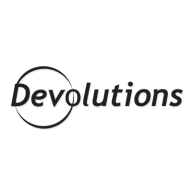

Microsoft Intune and Devolutions Remote Desktop Manager are in the IT management category. Microsoft Intune has the upper hand with its broad applicability across various devices.
Features: Microsoft Intune provides comprehensive device and application management, boasts integration with Azure AD, and offers advanced security policies. Devolutions Remote Desktop Manager offers centralized management of remote connections, streamlined password management, and extensive protocol support.
Room for Improvement: Microsoft Intune can improve by expanding support for non-Microsoft devices, enhancing ease of use for non-technical users, and increasing flexibility in policy management. Devolutions Remote Desktop Manager could enhance its user interface, expand its cloud integration capabilities, and offer more competitive pricing options for smaller organizations.
Ease of Deployment and Customer Service: Microsoft Intune offers cloud-based deployment, ideal for Windows environments, with comprehensive support from Microsoft. Devolutions Remote Desktop Manager supports flexible deployment options, focusing on ease for remote environments, with detailed documentation and community forums.
Pricing and ROI: Microsoft Intune's subscription model aligns with Microsoft 365 plans, offering scalable options and enhanced ROI through integration benefits. Devolutions' perpetual licensing model offers straightforward pricing and quick ROI for organizations focusing on remote access capabilities.
| Product | Market Share (%) |
|---|---|
| Microsoft Intune | 9.6% |
| Devolutions Remote Desktop Manager | 1.3% |
| Other | 89.1% |


| Company Size | Count |
|---|---|
| Small Business | 6 |
| Midsize Enterprise | 2 |
| Large Enterprise | 1 |
| Company Size | Count |
|---|---|
| Small Business | 116 |
| Midsize Enterprise | 46 |
| Large Enterprise | 152 |
Remote Desktop Manager (RDM) centralizes all remote connections on a single, secure platform that can be shared across the entire team. With support for hundreds of integrated technologies—including multiple protocols and VPNs—RDM provides a comprehensive solution for managing remote access. It also features enterprise-grade password management tools, detailed access controls, and mobile apps that complement its desktop clients for Windows and Mac, and Linux.
RDM is designed to empower IT departments by enhancing security, speed, and productivity across the organization. By streamlining remote access management, it helps reduce inefficiencies, lower costs, and minimize risks, making it an essential tool for today’s IT environments.
Microsoft Intune provides centralized management of mobile devices and applications, ensuring security, compliance, and productivity through integration with Microsoft services like Microsoft 365 and Azure Active Directory.
Organizations use Intune for managing mobile devices and applications, enhancing security and compliance across platforms. With features like single sign-on, conditional access, and zero-touch deployment via Autopilot, it facilitates efficient operations. Intune's scalability, easy enrollment, and capabilities such as remote wipe support diverse device management, offering robust data protection and efficient operation. Despite its features, improvement areas include reporting, compatibility with non-Microsoft devices, and better support for macOS and Linux devices.
What are the key features of Microsoft Intune?
What benefits should users look for in reviews?
In industries such as finance, healthcare, and education, Microsoft Intune is implemented to ensure secure and compliant device management. Companies leverage its capabilities to deploy security policies and manage both corporate-owned and BYOD environments, facilitating a unified approach to data protection and compliance.
We monitor all Remote Access reviews to prevent fraudulent reviews and keep review quality high. We do not post reviews by company employees or direct competitors. We validate each review for authenticity via cross-reference with LinkedIn, and personal follow-up with the reviewer when necessary.